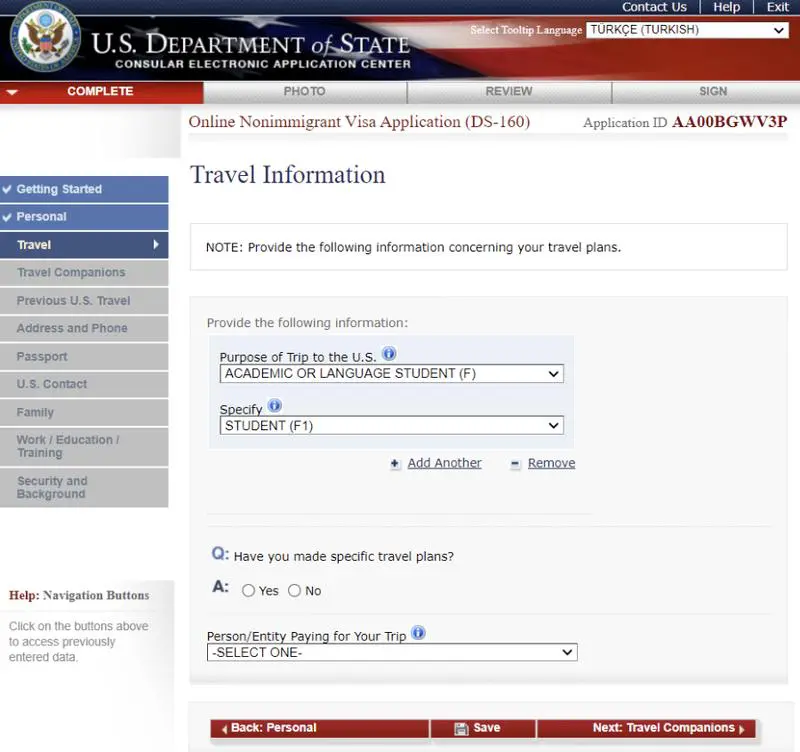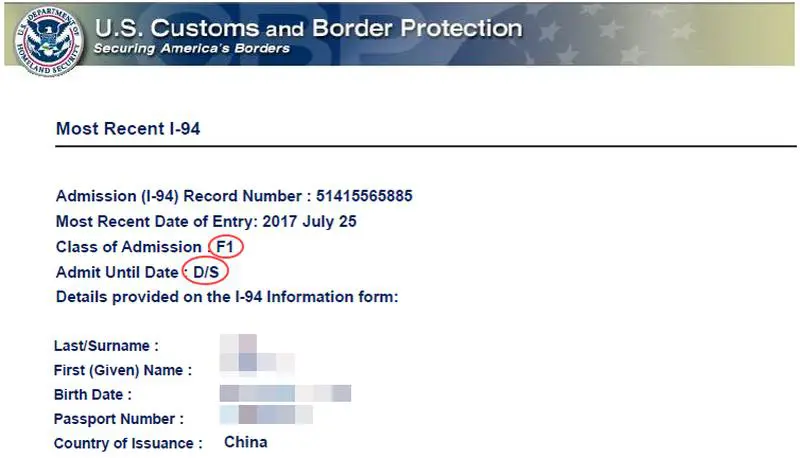About the US Student (F1) Visa Application Process
The US student visa is a non-immigrant visa type issued to international students who wish to pursue academic studies at educational institutions in the United States. The pre-application requirement for the US student visa, which has a visa code of F1, is to be accepted by an educational institution approved by the Student and Exchange Visitor Program (SEVP).
The types of education that international students can receive in the United States with an F1 visa are university or college, high school, private elementary school, seminary, conservatory, language school and other academic education.
Qualification Criteria for US Student Visa
To obtain a US student visa, you must meet the following conditions.
- You must be enrolled in an “academic” education program, a language education program, or a vocational program
- The institution where you will receive education must be approved by the Student and Exchange Visitor Program.
- You must be enrolled as a full-time student at the educational institution.
- You must be proficient in English or enrolled in courses that provide proficiency in English.
- You must have the financial ability to cover living expenses throughout the duration of your studies.
- You must have a residence in a different country that you do not intend to give up.
How to Get a USA F1 Student Visa?
The application steps to be followed to obtain a US student visa are listed below.
- Obtain acceptance and an I-20 form from a SEVP-approved educational institution.
- Pay the I-901 SEVIS fee.
- Complete the online student visa application form (DS-160).
- Prepare the necessary documents for a student visa.
- Make an appointment at the foreign representative office by paying the visa application fee.
- Give your fingerprints at the appointment and attend the visa interview.
SEVP Approved Educational Institution Admission Process and I-20 Form
Students who apply and are accepted to a SEVP-accredited school in the United States are first registered in the Student and Exchange Visitor Information System (SEVIS) by the school administration.
After SEVIS registration, the US educational institution issues the student a Form I-20, Certificate of Eligibility for Nonimmigrant Student Status. The US I-20 form must be signed by the school official and the student who will apply for the visa, and must be declared during the visa application interview and during entry to the US.
The visual of the I-20 form is given below.
SEVIS Registration Process and I-901 Fee Payment
During the SEVIS registration process, after receiving the Form I-20, the SEVIS I-901 fee of $375 for 2024 must be paid. According to federal regulations, students under the F visa must pay the SEVIS I-901 fee before applying for a visa and present the payment receipt with the visa application. The SEVIS number on the receipt must match the ID number on the Form I-20.
You can obtain detailed information about valid payment methods on the I-901 SEVIS fee page.
Student Visa Application Form (DS-160) Filling Process
For the US student visa application, the DS-160 form must be filled out via ceac.state.gov. The SEVIS number written on the I-20 form must be entered in the relevant section of the DS-160 form. In the travel information section of the application form, the travel purpose must be marked as “Academic or Language Student – F” and “Student – F1” respectively.
The DS-160 form image for a student visa is given below.

The DS-160 form should continue with the student’s information, education details, accommodation(s), and how expenses are covered. After completing the form, the student’s digital biometric photograph should be uploaded to the application system and a barcoded confirmation page should be printed out.
F1 Visa Fee Payment and Appointment Process
The US F1 student visa application fee is $160 and must be paid before making the visa appointment.
To pay the student visa application fee, after completing the DS-160 form, an account must be created with the application form code at usvisa-info.com. After selecting the US foreign mission (Ankara or Istanbul) where the interview will be held, the fee must be paid according to the instructions provided and an appointment must be made for the appropriate date.
As of January 2023, the appointment waiting time announced for US student visa applications is an average of 75 days at the Ankara Embassy and 195 days at the Istanbul Consulate General.
Documents Required for US Student Visa
For US student visa applications, the documents listed below must be prepared.
- Current passport (old passport and US visas if any)
- DS-160 visa form approval page
- I-20 form received from the educational institution
- SEVIS fee payment receipt
- Invitation letter from the school
- Educational documents (diploma, transcript, certificate, etc.)
- Current resume (CV)
- Identity card
- Biometric photo
- Document showing your military service status
- Proof of financial standing or sponsorship documents
- Appointment confirmation email printout
USA Student Visa Interview
The US student visa interview is carried out in person at the US foreign mission on the appointment date, along with the submission of visa documents and fingerprint registration procedures.
US student visa interview questions will mostly be about your reasons for going to the US and the educational institution you will be attending. The visa officer wants to assess your intention to return to your country after your education is completed.
The applicant is informed whether the visa is approved or not at the end of the US consulate interview . If the US student visa is approved, entry to the US can be made within 30 days before the start date of education.
What is the validity of F1 Visa and duration of stay in the USA?
The American F1 visa is a type of visa that is valid for 5 years and is given for multiple entries. With a student visa, the duration of stay in America is usually determined by the duration of education. In this case, the last date of stay is not written on the I-94 entry-exit card given upon entry to the USA, it is stated as D/S (duration of stay). After the completion of education, the student is given 60 days to leave the country.
A sample I-94 form is provided below.

Once approved, the visa may be issued for the full duration of your studies in the U.S. or less. If your study program is 1 year long, the Embassy will likely issue a visa that is valid for 1 year. If your program is 2 years long and your visa is only issued for 1 year, you will need to renew your F1 visa later.
What are the Reasons for US Student Visa Rejection?
Reasons for US student visa rejection are listed below.
- There are doubts that the applicant will return to his/her country at the end of the training.
- Not having enough financial means to support oneself during one’s stay in the United States
- The previous educational degree or institution is not considered reliable.
- Having a family member living in the United States
- Late visa application
- Passport does not meet the validity conditions
- Submission of missing documents
- Failure to successfully complete the visa interview
Applicants who are denied a US student visa do not have the right to appeal the decision. Those who are denied a US visa have the right to re-apply by preparing according to the reason for the rejection.
Frequently Asked Questions
The most frequently asked questions to our center regarding US student visa applications from Turkey and the rights granted to visa holders are answered below.
Can I Apply Fast for a US Student Visa?
If the education start date stated on the US I-20 form is earlier than the first available visa appointment, the student can request an expedited appointment.
Students who want to make an expedited appointment can request an urgent visa appointment to accelerate their US visa appointment after making an appointment for the earliest date.
Can I Work in the USA with an F1 Student Visa?
International students with an F1 student visa in the US can work a maximum of 20 hours per week on the university campus during the first year of their education and 40 hours per week during holidays within the scope of the US student visa work permit. Students who meet these conditions can apply for an SSN (Social Security Number) with an F1 visa in order to work legally in the US.
Detailed information about working in the United States with a student visa and other rights gained can be found on the US Department of Homeland Security’s Study in the States website.
Is it possible for me to stay in the USA with a student visa?
Staying in the United States with a student visa is possible by applying for a Green Card with an F1 visa, and this process is complicated.
The person must be a person of extraordinary ability, be married in the U.S., or prove that they will invest $500,000 in the U.S. economy. Those who do not meet these requirements may be able to change their visa status to a different type of visa, such as an H-1B visa, or have an employer sponsor them in order to remain in the U.S.
What is F1 Visa Status Change?
A US F1 visa status change is a process for switching to another non-immigrant visa status if the purpose of being in the country changes after going to the US as a student.
For example, if you decide to find a job and work in the United States after going to the United States with an F1 visa, you can switch to non-immigrant worker status without having to leave the United States, provided you meet the necessary conditions.
The application method you need to follow to change your US visa status varies depending on the conditions of your current visa and the type of visa you will be transferring to .
Can My Family Members Come to America with an F1 Visa?
While studying in the United States with an F1 visa, your family members, including your spouse and/or children, can come to the United States with you by registering with SEVIS, obtaining an individual I-20 form from a SEVP-approved school, and applying for a visa.
Spouses or eligible children of students with an F1 visa are granted an F2 visa to the United States .
What Visa Should I Get for a Short-Term Course in the USA?
You can get a B2 tourist visa to attend a short-term course in the USA.
A US B visa allows you to enroll in short-term recreational courses that do not lead to a degree or academic certificate and do not require credit. A US tourist visa , even if short-term , does not allow you to enroll in courses that lead to a degree or certificate. A student in a distance education program that requires a certain period of time on a US campus of an educational institution must obtain a student (F or M) visa to travel to the US.
What Other Visas Can I Get for Studying in the USA?
You can obtain other visas listed below for study purposes in the USA.
- American language school visa
- US vocational training visa
- US exchange program visa